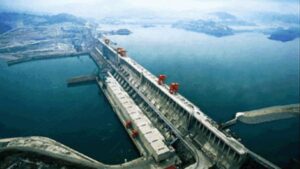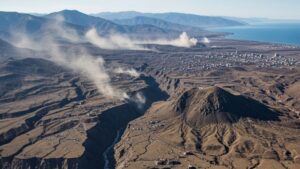After years of deliberation and technical evaluations, China has officially approved the construction of a deep-sea research facility in the strategically significant South China Sea. The facility, referred to as a “deep-sea space station,” will be anchored 2,000 meters (6,560 feet) below the ocean surface. It aims to advance marine exploration and strengthen China’s geopolitical presence in the resource-rich region. Expected to be operational by 2030, the station will accommodate six scientists for month-long missions, enabling real-time experiments in extreme underwater conditions.
Key Highlights of the Deep-Sea Research Station
1. Overview of the Project
- China has approved a deep-sea research facility to be built in the South China Sea.
- It will be one of the deepest and most advanced underwater installations ever attempted.
- The facility is expected to be operational by 2030.
- It will accommodate six scientists for extended missions of up to one month.
2. Purpose and Research Objectives
- The station will primarily focus on studying cold seep ecosystems, which are methane-rich hydrothermal vents.
- Research will include tracking methane fluxes, ecological shifts, and tectonic activity.
- It will contribute to the study of deep-sea biodiversity and unique life forms that survive extreme conditions.
- Findings could have applications in energy research, climate science, and medicine.
3. Technological and Strategic Significance
- The facility will support a long-term life support system to sustain scientists in deep-sea conditions.
- It will work with unmanned submersibles, surface ships, and seabed observatories to form a “four-dimensional” surveillance network.
- The project is part of China’s broader marine infrastructure strategy, which includes a seabed fiber-optic network and the deep-sea drilling ship Mengxiang.
- The station signals China’s transition from a maritime follower to a leader in deep-sea research.
4. Geopolitical and Economic Importance
- The South China Sea contains an estimated 70 billion tonnes of methane hydrates, a crucial energy resource.
- The region also has rare mineral deposits, including cobalt and nickel, with concentrations three times higher than land-based mines.
- More than 600 unique marine species have been discovered in this area, some possessing enzymes useful in cancer treatment research.
- The station could strengthen China’s territorial claims, similar to Russia’s use of deep-sea surveys to justify Arctic expansion.
5. Human vs AI in Deep-Sea Exploration
- Scientists aboard will conduct real-time experiments, making adjustments AI or robotic systems currently cannot handle.
- Autonomous vehicles may fail to detect sudden methane eruptions or adjust experiments that require daily pressure modifications.
- Human decision-making and problem-solving will remain critical despite advances in AI technology.
6. Power Source and Historical Precedents
- The power source remains classified, but experts speculate it could be nuclear-powered, similar to past U.S. and Soviet deep-sea stations.
- U.S. submarine NR-1 (retired in 2008) and Russian sub AS-12 Losharik (damaged in a 2019 fire) were capable of deep-sea operations but did not match the scope of China’s planned station.
| Summary/Static | Details |
| Why in the news? | China to Build First Deepwater ‘Space Station’ in South China Sea |
| Project Name | Deep-Sea ‘Space Station’ in South China Sea |
| Approval Date | February 2025 |
| Depth | 2,000 meters (6,560 feet) |
| Operational Year | By 2030 |
| Capacity | 6 scientists for up to one month |
| Research Focus | Cold seep ecosystems, methane flux, biodiversity, tectonic activity |
| Technological Features | Long-term life support, AI-integrated surveillance, seabed fiber-optic network |
| Economic Potential | 70 billion tonnes of methane hydrates, rich mineral deposits |
| Geopolitical Impact | Strengthens China’s territorial claims in the South China Sea |
| Human vs AI | Humans remain essential for deep-sea decision-making and real-time research |
| Possible Power Source |
Speculated to be nuclear-powered, similar to past U.S. and Russian deep-sea stations
|









 Historic Day! India-UK FTA Signed: ₹ Tri...
Historic Day! India-UK FTA Signed: ₹ Tri...
 China’s Construction of the World’s Larg...
China’s Construction of the World’s Larg...
 Powerful Earthquakes Strike Russia’s Kam...
Powerful Earthquakes Strike Russia’s Kam...

